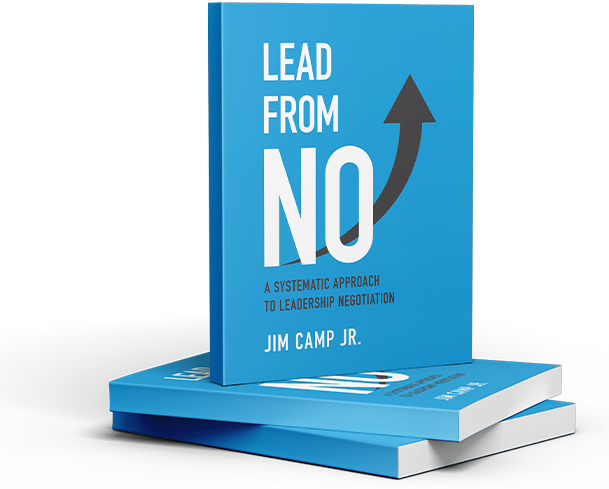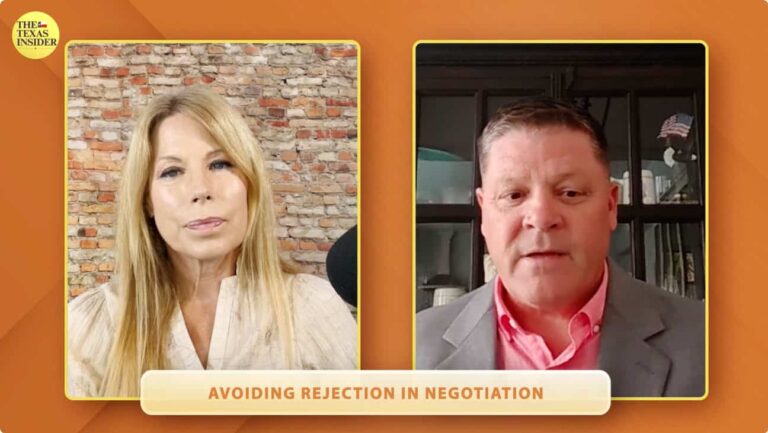Suppose you focus on selling or chasing a positive result in a negotiation. In that case, you miss many opportunities to discover the real problems your respected opponent is trying to solve and maximize potential value for yourself.
“Always be closing” focuses on the end of the negotiation process or the outcome, which is not how the Camp System works.
One of the biggest advantages (and challenges) of the Camp System is breaking down your negotiation and focusing on asking for decisions (or communicating your decisions) in each “negotiation event” as you move step by step toward an agreement. That way, you are not focusing on results. Instead, you focus on moving the negotiation forward, decision by decision, to build value along the way.
What is a negotiation event?
It is each meeting, video call, phone call, email, or text message where you interact with your respected opponents or internal team that contribute to an agreement. This habit of only concentrating on the “next step” is difficult for many people.
Why track negotiation events with Checklists?
To help negotiators focus on the next step, and only the next step, Jim Camp created the Negotiation Checklist. His development of Negotiation Checklists came from his experience in flying fighter jets. The checklists were invaluable in keeping pilots and the crew safe and raising the level of performance, even in expert pilots. A book we recommend is The Checklist Manifesto, by Atul Gawande. He states that checklists help us avoid two difficulties that experts face: memory and attention lapses, and skipping things we deem not vital.
Camp coaching clients take responsibility for each negotiation event by completing a checklist for every event. Forming the habit of consistently using checklists is critical to success.
Checklist: a tool that helps a negotiator prepare for the next phone call, meeting, or email, which are called “negotiation events.” The Checklist identifies where you stand, how to improve that standing, and what needs to be addressed in the upcoming event. Checklists will help you stay safe, increase your control, get your team on the same page, and advance the negotiation step by step. Checklists are a uniform preparation for negotiation for an individual or group. They help keep you and the other side on track and make the subsequent decisions.
What’s in a Camp Checklist?
The Camp System now uses a proprietary Checklist designed for negotiation. The Camp Checklist is intensive, but we’ll review the four most crucial areas here.
If you are rushing into a negotiation event and have no time to prepare a complete Checklist or are getting into the habit of preparing Checklists, start with these four items.
1. Negotiation Purpose Statement
Remember your Negotiation Purpose is to create agreements that solve the other party’s real problem or help them realize an opportunity under conditions that are acceptable to you. So we put this information in a clear and understandable statement. A unique Negotiation Purpose Statement is prepared for the overall negotiation, which is captured in your Negotiation Bucket List and a new Negotiation Purpose Statement is written for each negotiation event, i.e., phone call, zoom, email, etc. The Negotiation Purpose Statement is how you share your Negotiation Purpose with the other party.
The Negotiation Purpose Statement expresses your Negotiation Purpose 100% in the other party’s world and for their benefit only. You’ll write:
• What will you provide the other party?
• How will you provide it?
• Which benefits will the other party receive?
Notice that this Negotiation Purpose Statement does not include “the conditions that are acceptable to you” that are in your Negotiation Purpose; your conditions are not shared during your initial negotiation events. Why? Your Negotiation Purpose Statement is all about them; they’ll listen later to determine your requirements.
Your Negotiation Purpose Statement expresses precisely what you will provide the other party, how you will deliver it, and describes the benefit they will receive when they get it. This is what the other party is listening for. They want assurance that you understand them and what’s important to them. When you understand and communicate exactly what the other party wants, how they want it delivered, and the benefit they will receive, they are more likely to feel that you are working on their behalf, as well as your own.
The Negotiation Purpose Statement is often the first point of mutual agreement in a negotiation. It is something that you can always return to if the process becomes contentious. You can always say, “Even though we disagree on this issue, my purpose remains to provide you what you want, the way you want it so that you can receive your benefits.” Remember, just because you understand what they want does not mean you have to provide it. That’s your decision.
You are also on the path to understanding what the other party values as described in the benefit for them in your Negotiation Purpose Statement.
Only when you understand what they value, will you be able to capture a share of that value for yourself. At that point, you decide if you can and want to deliver what your respected opponent wants in the way they want it delivered under conditions that are acceptable to you, but not earlier.
2. Problems
What are the real problems that may prevent the negotiation from moving forward and allowing you to fulfill the promise of your Negotiation Purpose Statement? If they are not solved via negotiation, these problems will prevent you and your respected opponent from creating agreements that all parties will implement.
Not all problems are apparent. Consider: What don’t they see that is critical? What are the problems of the person with whom you are engaging? What problems must you overcome?
To ensure you and your respected opponent agree on the details of the real problems, use the 3+ method. Repeat their statement to them three times (in three different ways) and get agreement from them three times.
3. What do I want from this negotiation event?
You don’t want results from an event because results are not in your control. That is why the ‘always be closing’ is a poor negotiation strategy; it requires someone else to do something that is not in your control.
Rather than “always be closing”, you should always be making decisions. What you want are decisions because decisions move a negotiation forward. What decisions do you want your respected opponent to make in this next negotiation event? Or what decisions do I want to communicate to my respected opponent to ensure they understand the implications of these decisions to the negotiation? Solid decisions lead to maximizing value.
Take small steps by asking for small decisions to move the negotiation forward. Move step by step, building on a series of small decisions that stick. It is easier to make a series of small or incremental choices rather than asking for one big decision before your respected opponent sees the value.
Both sides always have the right to veto. Anyone can say No. Since you understand that No is only a decision and all decisions can be changed, you should not be concerned about what decision your respected opponent makes. When you hear a No, all you need to do is discover which one of the “four reasons people say no” applies. Don’t get too excited when you hear a Yes because now you must determine how to implement the Yes. What is important is getting a decision; this is more important than the decision itself.
4. What happens next?
Do you know what you’ll do and say after your respected opponent provides the decision you requested or agrees with/denies the decision you communicated with them? What do you do next if the decision they provide you is positive? What do you do next if the decision they provide you is negative?
When you prepare your response to their decision ahead of time, then you are not searching for words or ideas during the negotiation event. You are protected from saying things and making commitments you have not thought about before the negotiation event. This protects you from later saying to yourself, “Why didn’t I think of saying that during the negotiation?” or “I should not have committed to that. How do I take back what I said?”
In a negotiation, there could be 2, 10, or even 50 negotiation events. It may seem tedious to write one for every event. Still, our experience has proven that using Checklists makes your negotiation more effective. They also prevent you from getting into bad agreements, and often improve the deals that you do conclude.
Advanced tip:
After preparing your Checklist, send the top 1-3 problems identified in your Checklist to the other party in an agenda before you begin that negotiation event. When the other party agrees to your list of problems to be negotiated, you only prepare for this limited set of issues.
If the other party wishes to bring some other issues to the negotiation, you can agree or push their suggestions to a later negotiation event. During the negotiation event, if they bring up a new problem they didn’t previously agree to, you can now say that you are not prepared to discuss the new problem in the detail they deserve. That way, you’ll stick to your Checklist. When your respected opponent brings up other topics, you can politely and respectfully say that you’re not ready to talk about them in detail at this time.





